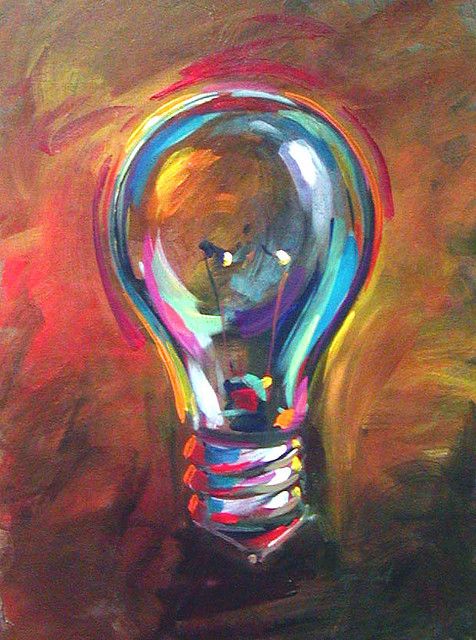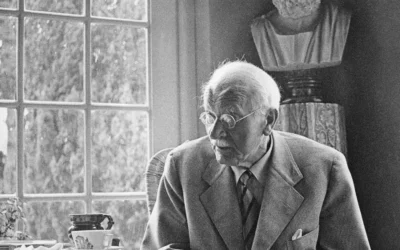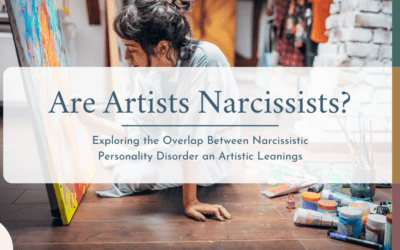What Does It Mean to Dream About Glass Objects in Your Mouth?
Dreams about glass objects trapped in the mouth represent one of the most psychologically rich and recurring patterns I’ve encountered in clinical practice. These dreams typically involve glass balls, light bulbs, bottles, or other fragile objects that are too large to remove from the mouth, yet too dangerous to swallow without causing internal damage.
What Is a Dream About a Glass Ball in the Mouth?
When patients describe dreams featuring glass balls in their mouths, they’re often expressing a fundamental conflict between self-expression and self-preservation. The glass ball, perfectly smooth and transparent, represents something pure and whole about their identity that they cannot articulate to others, yet cannot destroy without harming themselves.
What Does a Dream About a Light Bulb in the Mouth Mean?
Light bulb dreams carry particular significance because light bulbs symbolize ideas, realizations, and creative impulses. When a patient dreams of a light bulb too large to remove from their mouth, they’re often processing experiences where their insights, creativity, or understanding couldn’t be shared with others—particularly caregivers who weren’t equipped to receive these truths.
A Recurring Pattern: Case Studies from Clinical Practice
While I typically avoid focusing on individual dream interpretations in favor of broader therapeutic patterns, I’ve encountered this specific dream motif at least five or six times throughout my career with remarkable consistency. Each instance has revealed similar underlying dynamics, making it worthy of deeper exploration.
In one case, a 34-year-old artist described recurring dreams of a large glass bottle in her mouth. The bottle contained what she described as “liquid light”—her creative essence that her parents had never acknowledged during her childhood. Her mother, struggling with her own unfulfilled artistic ambitions, had consistently redirected conversations away from her daughter’s creative expressions.
Another patient, a 28-year-old software engineer, dreamed repeatedly of a glass orb that would expand whenever he tried to speak. His father, a rigid perfectionist, had created an environment where only certain achievements were recognized, leaving no space for the son’s interests in poetry and philosophy.
A third case involved a 41-year-old teacher who dreamed of antique glass Christmas ornaments filling her mouth. These delicate objects represented childhood memories and emotions her family had deemed “too sensitive” or “dramatic” to acknowledge.
The Developmental Origins of Glass Object Dreams
These dreams consistently emerge from specific childhood environments that create what I call “expressive impossibility.” The common thread involves children who possessed aspects of themselves—feelings, insights, talents, or needs—that required parental recognition for healthy development. However, these parents, often due to their own limitations or psychological defenses, were unable to see or hear these crucial parts of their children.
The glass nature of these dream objects is psychologically significant. Glass is transparent, suggesting these aspects of self were potentially visible but overlooked. Glass is also fragile, indicating the vulnerability of these unexpressed parts of identity. Most crucially, glass shatters dangerously when broken, reflecting the child’s intuitive understanding that destroying these parts of themselves would cause profound internal damage.
Sexual Identity and Unexpressed Truths
In several cases, these dreams have emerged during therapy addressing sexual identity issues. One patient, discovering her lesbian identity in her thirties, had recurring dreams of rose-colored glass spheres in her mouth throughout her twenties. The spheres represented her authentic sexuality that she couldn’t express to her conservative religious family, yet couldn’t deny without destroying something essential about herself.
The mouth as the dream location is significant here—it’s the organ of speech, communication, and connection. When something fills the mouth completely, it prevents articulation while simultaneously demanding attention. The dreamer cannot speak their truth, yet cannot ignore it either.
Parental Needs and the Child’s Dilemma
Often, these dreams trace back to parents who needed to see themselves as “good parents” meeting all their children’s needs, while simultaneously being unable to recognize or respond to significant aspects of their children’s experiences. This creates an impossible situation for the child: expressing their unmet needs would shatter the parent’s self-image, potentially destabilizing the entire family system.
One patient described how her mother would say, “I’ve given you everything you could possibly need,” whenever she tried to express loneliness or emotional hunger. The glass bottle in her dreams contained “all the words I couldn’t say without making her feel like a bad mother.”
The Double Bind and Glass Object Dreams
The concept of the double bind, developed by Gregory Bateson and his colleagues, provides crucial insight into these dreams. A double bind occurs when someone receives contradictory messages where they cannot win regardless of their response. In the context of glass object dreams, the double bind often manifests as:
“Be yourself and express your truth” (explicit family message) coupled with “But only express aspects of yourself that confirm I’m a good parent” (implicit message)
This creates an impossible situation where authentic self-expression threatens the relational bond the child depends upon for survival. The glass object in the mouth perfectly symbolizes this dilemma—it cannot be expelled without losing part of oneself, yet cannot be swallowed without internal destruction.
The double bind particularly damages the child’s ability to trust their own perceptions and feelings. When a parent consistently responds to a child’s emotional expressions with denial (“You don’t really feel that way”) or redirection (“Look how lucky you are”), the child learns that their internal reality is somehow wrong or dangerous.
Jungian Perspectives on Glass Object Dreams
The Jungian school of dream interpretation offers rich insights into these recurring motifs. From a Jungian perspective, the glass objects represent aspects of the Self (with a capital S) that have not been integrated into conscious awareness. The transparency of glass suggests these are not shadow materials (which would appear dark or opaque) but rather luminous aspects of personality that seek recognition and expression.
Jung wrote extensively about the mouth as a threshold between inner and outer worlds. In glass object dreams, this threshold becomes blocked by something that is simultaneously part of the self and foreign to it—reflecting the child’s experience of having authentic aspects of identity that feel both essential and alien due to lack of parental mirroring.
The recurring nature of these dreams across different patients suggests we’re dealing with what Jung would call an archetypal pattern—a universal human experience of having vital aspects of self that cannot find expression in the relational environment.
Dream Wise: Contemporary Jungian Approaches
The book “Dream Wise” by from “This Jungian Life” podcast have expanded our understanding of how modern Jungian analysts approach such dreams. They emphasize the importance of staying with the image rather than rushing to interpretation.
When working with glass object dreams, contemporary Jungian analysts might ask:
- What is the quality of the glass? Clear, colored, textured?
- What does the object contain, if anything?
- What would happen if the glass broke? Where would the pieces go?
- Is anyone else present in the dream? How do they respond to the dreamer’s predicament?
These questions help the dreamer develop a relationship with the dream image, allowing its meaning to unfold organically rather than being imposed from outside—ironically, the opposite of what happened in their childhood.
The Symbolic Richness of Different Glass Objects
The specific type of glass object in these dreams carries important symbolic weight. A light bulb represents illumination, ideas, and insights that needed to be shared but couldn’t be. The filament inside the bulb might represent the delicate thread of authentic self that would be destroyed if the bulb shattered. Patients with light bulb dreams often had childhood insights about family dynamics that were too threatening to voice.
Bottles suggest containment and preservation. These dreams often appear in patients whose emotional expressions were bottled up. The bottle might contain tears, words, or even screams that were never released. One patient described the bottle in her dream as containing “fermented feelings”—emotions that had been stored so long they had transformed into something more potent.
Glass balls or orbs represent wholeness and completeness. These often appear in dreams of patients who had to hide their whole selves, showing only fragments that were acceptable to their caregivers. The spherical shape suggests something perfect and complete that cannot be broken into acceptable pieces without destroying its essential nature.
The Therapeutic Process: Working with Glass Object Dreams
When these dreams emerge in therapy, they often signal readiness to address these early relational wounds. The therapeutic process involves several stages:
First, we validate the dreamer’s dilemma. The dream reflects a real childhood impossibility, not a failure of courage or expression. The child was faced with an genuinely unsolvable problem.
Second, we explore what the glass object represents with curiosity rather than rushing to interpretation. Patients often know intuitively what their glass object contains or represents, but may need permission to articulate it.
Third, we examine current life situations where similar dynamics might be playing out. Often, patients with these dreams find themselves in relationships or work situations that recreate the original double bind.
Fourth, we imagine together what it might mean to find a different solution to the dream dilemma. Some patients imagine the glass becoming flexible, others imagine someone helping them remove the object safely, and still others imagine the glass transforming into something digestible.
The Path Forward: Integration and Healing
Healing from the wounds represented by glass object dreams involves developing what psychoanalyst Christopher Bollas calls “the unthought known”—bringing into conscious awareness and language those aspects of self that were known but could not be thought or spoken in the original relational context.
This process requires a therapeutic relationship that can hold paradox: the therapist must be able to see and acknowledge what the parents couldn’t, while also helping the patient grieve the original lack of recognition. It’s not about blame, but about finally having a witness to these unexpressed truths.
Over time, patients often report that the glass objects in their dreams begin to transform. They might become smaller, softer, or even dissolve into light. One patient dreamed that the glass ball in her mouth became a soap bubble that she could blow out gently, watching it float away carrying “all the words I couldn’t say” written on its surface in iridescent letters.
The Universal and the Particular
While each glass object dream is unique to the dreamer’s experience, the recurring pattern across different patients suggests something universal about human development. We all have aspects of ourselves that seek expression and recognition. When the environment cannot receive these aspects, they don’t disappear—they become preserved in glass, waiting for a relationship that can finally see and acknowledge them.
These dreams remind us that psychotherapy is often about providing what was missing: not just interpretation or insight, but the experience of being truly seen and heard in our wholeness. The glass objects in our mouths await a listener who can help us find words for what seemed unspeakable, making it possible to finally express what we’ve carried silently for so long.
Bibliography
Bateson, G., Jackson, D. D., Haley, J., & Weakland, J. (1956). Toward a theory of schizophrenia. Behavioral Science, 1(4), 251-264.
Bollas, C. (1987). The Shadow of the Object: Psychoanalysis of the Unthought Known. Columbia University Press.
Bosnak, R. (1996). A Little Course in Dreams: A Basic Handbook of Jungian Dreamwork. Shambhala.
Edinger, E. F. (1972). Ego and Archetype: Individuation and the Religious Function of the Psyche. Shambhala.
Fonagy, P., Gergely, G., Jurist, E., & Target, M. (2002). Affect Regulation, Mentalization, and the Development of the Self. Other Press.
Hill, J. (2004). Dream Wise: Unlocking the Meaning of Your Dreams. Three Rivers Press.
Johnson, R. A. (1986). Inner Work: Using Dreams and Active Imagination for Personal Growth. HarperSanFrancisco.
Jung, C. G. (1964). Man and His Symbols. Dell Publishing.
Jung, C. G. (1974). Dreams. Princeton University Press.
Kalsched, D. (1996). The Inner World of Trauma: Archetypal Defenses of the Personal Spirit. Routledge.
Ogden, T. H. (1992). The Primitive Edge of Experience. Jason Aronson.
“This Jungian Life” Podcast. (2019-2024). Various episodes on dream interpretation and symbolic analysis.
Taylor, J. (1992). Where People Fly and Water Runs Uphill: Using Dreams to Tap the Wisdom of the Unconscious. Warner Books.
Winnicott, D. W. (1965). The Maturational Processes and the Facilitating Environment. International Universities Press.
Woodman, M. (1982). Addiction to Perfection: The Still Unravished Bride. Inner City Books.


















0 Comments